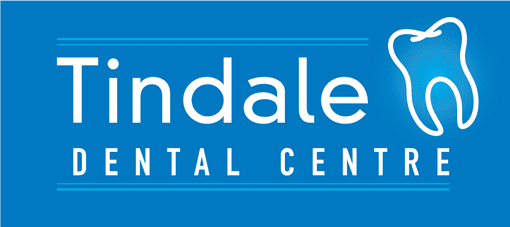
In the wake of an urgent discussion in early February between ADA President Dr Hugo Sachs and the Federal Health Minister Greg Hunt, which was precipitated by the decision of a cross section of Senators to oppose cuts made by the Australian Government to the Child Dental Benefits Schedule (CDBS) cap, the Government has advised that it will be restoring the cap back to its original figure of $1000.
Update
Following concerted advocacy efforts by the ADA, the Minister for Health and Aged Care, the Hon Sussan Ley announced on 15 December 2016 that the Children Dental Benefits Schedule (CDBS), which has been threatened with closure since March this year, will be retained.
The retention of the CDBS, the closure of which was opposed by a broad spectrum of dental practitioners and other health professionals as part of a campaign spearheaded by the ADA, means that its proposed replacement the Child and Adult Public Dental Scheme, will now not proceed.
The continuation of the CDBS comes with some modifications with the maximum benefits available to each eligible child reduced from $1000 to $700; however, any child who commenced treatment during 2016 will retain access to the full original cap amount through their two-year treatment period.
While the Government claims that the reduction in the cap is due to underutilisation of the CDBS, the ADA has steadfastly maintained that any lack of take-up by eligible patients is due more to poor promotion of the scheme than to any major deficiencies in the scheme itself.
Update
The ALP has confirmed that after extensive negotiations with the Government on a raft of budgetary saving measures, that it has successfully removed the CDBS from the Budget Savings Omnibus legislation and will actively oppose the scheme’s closure.
It’s a critically important first step towards saving the scheme which plays a vital role in delivering much-needed dental services to the most disadvantaged children in Australia.
The planned replacement for the CDBS, the Child and Adult Public Dental Scheme (caPDS) has been consistently criticised as inadequate to the task at hand, pushing vulnerable children back into an under-resourced, overstretched public healthcare system where waiting times range from 127 days in metropolitan Perth to 933 days in Tasmania.
Additionally, eligible children in rural and remote areas will be forced to travel considerable distances to their nearest available public dental service rather than accessing treatment under the CDBS at the participating private dental practice closest to them.
The announcement by the ALP, which means that the Senate will be able to undertake a full inquiry into the impact of the proposed closure, adds to growing opposition from both the Greens, who recently held an Informal Senate Hearing on the closure of the CDBS, and the cross bench, to Government’s plans to close the scheme.
Update
Following the re-election of the Coalition Government, the first opportunity for the new Parliament to consider any new legislation will be when it sits for the first time in September this year. At this point, it is expected that the Government will introduce legislation into the House of Representatives to close the Scheme. While this legislation will most likely pass the lower house, it still needs to be introduced into the Senate where the Greens and Labor have indicated a willingness to send the legislation to an inquiry, delaying any formal closure of the Scheme by at least a couple of months. If the passage of the legislation follows this path, then the CDBS will in all likelihood be in operation until the end of the year, with the Government wanting their replacement scheme, the Child and Adult Public Dental Scheme, in operation from the start of 2017.
Update
When the federal government confirmed in April this year that it intended to close the Child Dental Benefits Schedule (CDBS) and replace it with the Child and Adult Public Dental Scheme (caPDS), the scheduled date for cessation of the CDBS was 1 July.
However, the announcement of a federal election for 2 July meant that both houses of Parliament were immediately dissolved and the government was placed into caretaker mode, postponing all legislative changes until Parliament resumes some months after the election.
Since schemes like the CDBS can only be terminated by a legislative change, this means that it remains in operation until such time as Parliament sits again and a vote to decide whether it continues or not can be taken.
This has been confirmed by the Department of Health which has announced the following via its website (health.gov.au):
“On 23 April 2016, the Australian Government announced its intention to close the Child Dental Benefits Schedule (CDBS) from 1 July 2016. As the legislation was not passed by Parliament before the Government entered into caretaker arrangements on 9 May 2016, the CDBS remains open.”
Given this status, dental practitioners are being encouraged by the ADA to continue to see patients under the scheme until such time as a vote takes place and the final fate of the CDBS is determined.
Update
In line with widespread expectations, a federal election has been called for 2 July.
The announcement means that both houses of Parliament are immediately dissolved and places the government into caretaker mode, postponing all legislative changes until Parliament resumes some months after the election.
In effect, this leaves the CDBS, which can only be officially axed by a vote of Parliament, in operation beyond the initially proposed 30 June cutoff. During this time, dental practitioners are being encouraged by the ADA to continue to see patients as the Department of Health has confirmed that the scheme will continue as before until such time as Parliament votes to terminate it.
Whether such a vote is successful, of course, rests entirely on the make-up of the new Parliament. Additionally, it is highly likely that the Senate will refer the legislation to terminate the CDBS to a Senate Inquiry, delaying the vote still further. Given these circumstances, tthe CDBS will continue until at least the last quarter of the year. With this in mind, the ADA will keep fighting to #savetheCDBS throughout the election campaign.
The #savetheCDBS campaign, which has notched up some considerable successes to date, is still necessary, given the deficiencies in the new Child and Adult Public Dental Scheme (caPDS), which was formally announced in the Budget when it was formally tabled on 3 May.
In short, papers supplied on Budget night confirmed that the new scheme involves a $1 billion cut in funding to publicly-funded dental schemes, coupled with an increase of people eligible to access the scheme from 3.4 million children to more than 10 million children and adults. All of these additional services will be provided via an already over-burdened public system, with no firm guarantee that any work will be handled by the private sector.
Update
The Turnbull government has formally announced that it plans to replace the CDBS, which the ADA is currently working to save,with the Child and Adult Public Dental Scheme (caPDS) which shifts provision of dental care to some of Australia’s most disadvantaged groups to the public systems of States and Territories. While it is being presented as an increase in funding, it actually entails a significant decrease in spending with approximately $200m being cut from the public dental healthcare budget. Additionally, the new scheme relies on already overcrowded public services to deliver the scheme, meaning that many people will face signicant delays in receiving necessary dental treatments.
The campaign to #savetheCDBS continues – this timeline provides a snapshot of the fight to date.
/timeline.png.aspx)
The Issue
Since its launch in January 2014, the Child Dental Benefits Schedule (CDBS) has had a significant impact on the oral health of Australia’s children, providing over 9.7 million services in just over its first two years of operation (January 2014-January 2016).
Created to provide dental care for children aged 2-17 years whose parents receive Family Tax Benefit Part A, Parenting or Double Orphan Pension payments from the federal government, the CDBS supplies an allocation of up to $1000 over a two calendar year period to spend on preventive dental services. 80% of CDBS dental services delivered to children under this framework have been in the private sector with 97% being bulk billed at no cost to families.
Despite this success in providing dental care to many of the most disadvantaged children in Australia, the Federal Health Minister Sussan Ley stated at a meeting in March 2016 that the scheme had failed to live up to expectations and that funds could be better spent elsewhere. However, the only option offered at that time was a vaguely-worded proposal floated that funds might be allocated instead to the States for dispersal through their health services.
Later that month Malcolm Turnbull confirmed in Parliament that a review was underway:
“As honourable members are also aware, the Child Dental Benefits Schedule is nowhere near meeting its target, with only around 30 per cent of eligible children accessing the scheme … We are working on dental reform and as part of that it is only natural that the Government considers the effectiveness of current programs …”
The government’s negative assessment of the CDBS appears to have been driven in part by what they consider to be an unexpectedly low take-up rate for the scheme. To date, approximately only 30% of the 3.4 million children eligible to be treated under the CDBS have received treatment; this can largely be attributed to both ineffective, far too low key promotion for the scheme and unrealistic initial targets, something the Report on the Third Review of the Dental Benefits Act 2008 confirmed when it noted that it “was of the view that this [the low take up figure] may reflect an unrealistic original target, rather than significant underutilisation.”
In response to the government’s intention to cease funding for the CDBS in the May budget, the ADA launched a campaign that included a petition, a resource kit for campaigners and an active program of lobbying government and engendering community support for the scheme’s retention. The ADA argues that the scheme is a vital part of delivering services to the Australian community and a model for government-funded services generally, which it has outlined in its Australian Dental Health Plan.
To underline the retrogade nature of the Australian government’s likely decision to close the CDBS, contrast it with the British government’s recent decision to impose a sugar tax to protect oral health. Full details are available in the latest National Dental Update.
